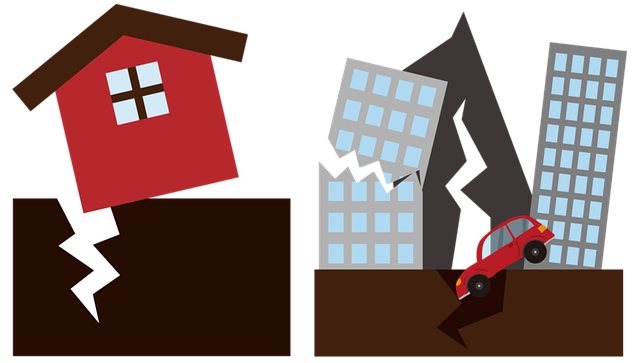Optimize Tesla Rear Hatch Alignment for Enhanced Functionality
Tesla Rear Hatch Alignment: Vital for Safety, Performance & Car ValueMaintaining proper Tesla re…….
In the rapidly evolving landscape of electric vehicles (EVs), Tesla has consistently pushed boundaries, revolutionizing not just the automotive industry but also the broader concept of sustainable transportation. Among its many pioneering efforts, “Tesla rear hatch alignment” stands out as a critical aspect that contributes to the overall efficiency, safety, and user experience of its electric car models. This article delves into the intricate world of Tesla’s rear hatch alignment, exploring its definition, significance, global impact, technological advancements, challenges, and future prospects. By examining these facets, we aim to provide an insightful guide for both industry professionals and enthusiasts curious about this essential EV component.
Tesla rear hatch alignment refers to the precise positioning and calibration of the vehicle’s rear hatch or liftgate in relation to the car body and its mechanical components. This intricate process ensures seamless operation, optimal performance, and a secure locking mechanism for the electric vehicle’s rear cargo area. The rear hatch, a pivotal feature in EV design, serves multiple purposes: it facilitates easy loading and unloading of cargo, provides access to the battery compartment (in some models), and contributes to overall vehicle aesthetics.
The core components involved in this alignment include:
Liftgate Mechanism: This is the physical door that opens and closes the rear hatch. It is connected to various actuators and sensors that enable its operation.
Actuators: These mechanical devices convert electrical signals into physical movement, allowing control over the liftgate’s opening and closing.
Sensors: Sensors play a crucial role in alignment by detecting the position of the liftgate, ensuring it operates within safe parameters and aligns accurately with the vehicle body.
Control Unit: The brain of the system, this unit receives signals from sensors and sends commands to actuators, coordinating the overall alignment process.
Historically, achieving precise rear hatch alignment in EVs presented unique challenges due to the complex interplay of mechanical and electrical components. Traditional internal combustion engine vehicles had simpler designs, making alignment adjustments more straightforward. However, with Tesla’s focus on innovation and automation, they have developed advanced systems to tackle these challenges, ensuring a seamless driving experience for their electric car owners.
The concept of Tesla rear hatch alignment has resonated globally, influencing the design and engineering practices within the international automotive industry. Here are some key trends shaping its impact worldwide:
Electric Vehicle Adoption: The global shift towards electrification is a primary driver. As more countries embrace sustainable transportation, the demand for EVs continues to rise, pushing manufacturers to refine their alignment technologies to meet consumer expectations.
Autonomous Vehicles: The advent of autonomous driving technology requires seamless integration of various vehicle systems, including rear hatches. Tesla’s advanced alignment systems serve as a model for achieving precise control necessary for self-driving cars.
Regional Regulations: Different regions have varying safety and environmental standards that influence EV design. Manufacturers must adapt their alignment techniques to meet these local requirements, ensuring compliance while maintaining global competitiveness.
For instance, European countries have stringent emission standards, encouraging the adoption of EVs with advanced alignment systems to enhance energy efficiency and reduce noise levels during operation. In contrast, regions like North America focus on safety regulations, leading to innovations in crash-safe rear hatch designs and mechanisms.
The economic landscape surrounding Tesla rear hatch alignment is dynamic and multifaceted. Several factors contribute to its market dynamics:
| Market Factors | Description |
|---|---|
| Supply Chain Complexity | The intricate supply chain involves sourcing rare earth metals, advanced electronics, and mechanical components, each subject to price fluctuations and availability issues. |
| Cost of Research & Development (R&D) | Tesla’s continuous innovation requires substantial R&D investments to develop more efficient and safer alignment systems. |
| Competitive Landscape | Other EV manufacturers are actively investing in similar technologies, fostering competition and driving down costs while raising performance standards. |
| Consumer Demand | Growing consumer interest in EVs creates a demand for improved rear hatch features, pushing manufacturers to invest in advanced alignment solutions. |
Investments in Tesla rear hatch alignment technology have significant economic implications:
Job Creation: The development and production of advanced EV components contribute to job growth in manufacturing, engineering, and research sectors.
Industry Growth: As the EV market expands globally, the demand for sophisticated alignment systems will drive industry growth, attracting further investment.
Technological Spin-offs: Innovations in rear hatch alignment may lead to byproducts with applications beyond EVs, generating additional revenue streams.
Tesla has been at the forefront of technological advancements in EV rear hatch alignment, setting new benchmarks for industry standards. Here are some notable developments:
Motorized Latching Systems: Traditional mechanical latches have given way to motorized systems that offer faster and more precise locking. These systems eliminate the need for manual effort, enhancing user experience.
Sensor Fusion Technology: The integration of multiple sensors, such as cameras, lidar, and ultrasonic sensors, enables advanced diagnostic capabilities and improved alignment accuracy.
Adaptive Alignment Algorithms: Tesla’s software engineers have developed algorithms that can dynamically adjust the hatch alignment based on various factors like temperature changes, load distribution, and vehicle speed.
Over-the-Air (OTA) Updates: Tesla’s over-the-air update capability allows for remote firmware upgrades to the rear hatch control unit, enabling the introduction of new features or bug fixes without requiring physical visits to service centers.
These technological advancements not only improve the functionality and reliability of Tesla’s rear hatch alignment but also contribute to the overall vehicle connectivity and autonomous driving capabilities.
The development and implementation of Tesla rear hatch alignment are subject to various policies and regulations, ensuring safety, environmental sustainability, and consumer protection. Key frameworks include:
Safety Standards: Organizations like NHTSA (National Highway Traffic Safety Administration) in the US and EU’s ECE (Economic Commission for Europe) set mandatory crash testing and safety performance criteria for EVs, including rear hatches.
Emission Regulations: Strict emission standards in many regions require EVs to operate efficiently, influencing design choices related to alignment and overall vehicle dynamics.
Consumer Protection Laws: These laws ensure that manufacturers provide clear information about product features, including any known issues or limitations with the rear hatch alignment system.
Environmental Policies: Incentives and subsidies for low-emission vehicles can impact consumer adoption of EVs with advanced alignment systems, as they contribute to overall vehicle efficiency.
Despite its numerous benefits, Tesla rear hatch alignment faces several challenges and criticisms that manufacturers must address to ensure widespread adoption:
Reliability Concerns: Early models of some EV brands experienced issues with rear hatch reliability, leading to customer complaints. Addressing these concerns through improved engineering and quality control is essential.
Cost of Implementation: Developing and integrating advanced alignment systems can significantly increase vehicle production costs, potentially impacting the affordability of EVs. Balancing innovation with cost-effectiveness is a delicate challenge.
Serviceability: As rear hatches become more complex, ensuring accessible service points for repairs and maintenance becomes crucial to customer satisfaction.
Regulatory Compliance: Keeping up with evolving safety and environmental regulations across different markets can be challenging, requiring manufacturers to invest in extensive research and testing.
Actionable Solutions: To overcome these challenges:
Tesla’s flagship sedan, the Model 3, features a sophisticated rear hatch alignment system that sets a benchmark for industry standards. The motorized latching mechanism ensures smooth operation and quick opening/closing. Sensor fusion technology allows the car to adjust its alignment based on various driving conditions, improving stability during transport. Additionally, Tesla’s OTA update capability has enabled over-the-air fixes for minor software glitches related to the hatch, enhancing customer satisfaction.
Ford’s electric SUV, the Mustang Mach-E, incorporates adaptive alignment technology inspired by Tesla’s innovations. The system uses advanced sensors to detect and compensate for changes in temperature and load, ensuring consistent performance across varying conditions. This adaptability enhances the overall driving experience, especially during extreme weather or when carrying heavy loads. Ford’s implementation has received praise for its seamless integration and user-friendly interface.
Volkswagen’s ID.4, an electric crossover SUV, introduces a smart latching system that uses magnetic technology to secure the rear hatch. This innovative approach reduces the reliance on mechanical components, simplifying maintenance and alignment processes. The magnetic system also offers enhanced security, as it can detect unauthorized attempts at opening the hatch. Volkswagen has received positive feedback for its ease of use and contribution to the vehicle’s sleek design.
The future of Tesla rear hatch alignment presents exciting possibilities and growth areas:
Autonomous Driving Integration: As autonomous vehicles become more prevalent, seamless integration with advanced driver assistance systems (ADAS) will be crucial. Rear hatches must communicate effectively with these systems to facilitate safe and efficient operations.
Sustainable Materials: There is a growing trend towards using sustainable materials in EV manufacturing, including rear hatch components. Developing eco-friendly alignment mechanisms while maintaining performance standards will be an area of focus.
Enhanced Connectivity: Future EVs will likely feature more advanced connectivity, enabling over-the-air updates for not just software but also hardware components related to alignment systems.
Personalized Settings: Customizable settings that allow drivers to adjust hatch behavior according to their preferences could become a standard feature, enhancing the overall user experience.
Tesla rear hatch alignment is more than just a mechanical feature; it represents the fusion of advanced technology and sustainable transportation. As the world shifts towards electrification, this component plays a pivotal role in shaping the future of electric mobility. Through global collaboration, technological innovation, and adherence to regulatory standards, manufacturers are continuously refining these systems to meet evolving consumer needs.
By addressing challenges, embracing new technologies, and learning from successful case studies, the automotive industry can unlock the full potential of Tesla rear hatch alignment, contributing to safer, more efficient, and environmentally friendly electric vehicles. As we look ahead, the ongoing evolution of this technology will undoubtedly play a significant role in redefining the driving experience for generations to come.
Q: How does Tesla’s rear hatch alignment differ from conventional internal combustion engine vehicle alignments?
A: Unlike traditional vehicles, EVs have additional electrical and mechanical components that require precise calibration. Tesla’s systems incorporate advanced sensors and software algorithms for dynamic alignment adjustments, ensuring optimal performance throughout various driving conditions.
Q: Can the rear hatch alignment of an EV be adjusted by the owner?
A: In most cases, owners cannot directly adjust the alignment themselves due to the complexity of these systems. However, Tesla and other manufacturers offer remote diagnostics and over-the-air updates that may include minor alignment adjustments to enhance performance or address software issues. Regular maintenance checks by professionals are recommended.
Q: Are there any safety risks associated with defective rear hatch alignment?
A: Defective alignment can potentially lead to hazards during driving, such as reduced stability while towing or improper locking mechanisms, increasing the risk of theft. Rigorous testing and quality control measures are essential to mitigate these risks.
Q: How do environmental factors impact EV rear hatch alignment?
A: Extreme temperatures can affect the performance of sensors and actuators, requiring advanced algorithms to compensate. Additionally, changes in weather conditions may influence the sealing of the rear hatch, impacting overall energy efficiency. Manufacturers must consider these factors during design and implement adaptive systems for optimal performance.

TL;DR: Tesla rear hatch alignment issues cause bothersome noises and rattles while driving, affectin…….

Tesla rear hatch alignment is vital for both vehicle functionality and aesthetics. Misalignment can…….